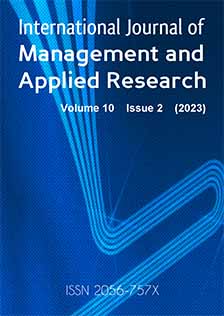Designed Co-spontaneity: A New Model for Facilitating Pedagogic Practice
Designed Co-spontaneity: A New Model for Facilitating Pedagogic Practice
Author(s): Arjun Khara, Matthew LickissSubject(s): Social Sciences, Education, Adult Education, Higher Education , Educational Psychology, Sociology of Education, Pedagogy
Published by: New Millennium Discoveries Ltd
Keywords: Co-spontaneity; Uncertainty; Design Thinking; Meetings; Control; Higher Education
Summary/Abstract: This paper presents a conceptual model for a design thinking approach to achieving co-spontaneity in higher education contexts, particularly within ‘meetings’, (i.e., lectures, tutorials, and tutor-student feedback sessions). The model re-evaluates these meetings as an essential part of ideation and exploration—rather than as a barrier—in spaces where uncertainty can be embraced. Uncertainty is often seen as a factor to be reduced or avoided, especially in teaching, but is here viewed as essential to bringing about engaging staff-student experiences through strategically designed spontaneity for all participants. In support of this approach, the literature and reflection on practice are presented as challenges to complacency on the part of educators, championing instead the need to embrace uncertainty in design-led classrooms as desirable for both, teaching and teaching planning. The model thus proposes that spontaneity be ‘co-collaborative’ and not simply imposed upon students as yet another activity demanding compliance. Reflections from practice with this model are grouped around three themes: (i) barriers from academic culture, often on the part of staff; (ii) barriers from academic literacy, often on the part of students; and (iii) assumptions, applicable to all. By positioning these reflections alongside contexts drawn from literature around meetings, uncertainty, and risk in higher education, our four-zone model presents a continuum—from absolute control to absolute chaos. The model does not attempt to provide definitive answers to uncertainty, but instead offers a reflective tool to support, and even embrace, the benefits of uncertainty and spontaneity in teaching and planning for staff and students of design.
Journal: International Journal of Management and Applied Research
- Issue Year: 10/2023
- Issue No: 2
- Page Range: 270-282
- Page Count: 12
- Language: English

